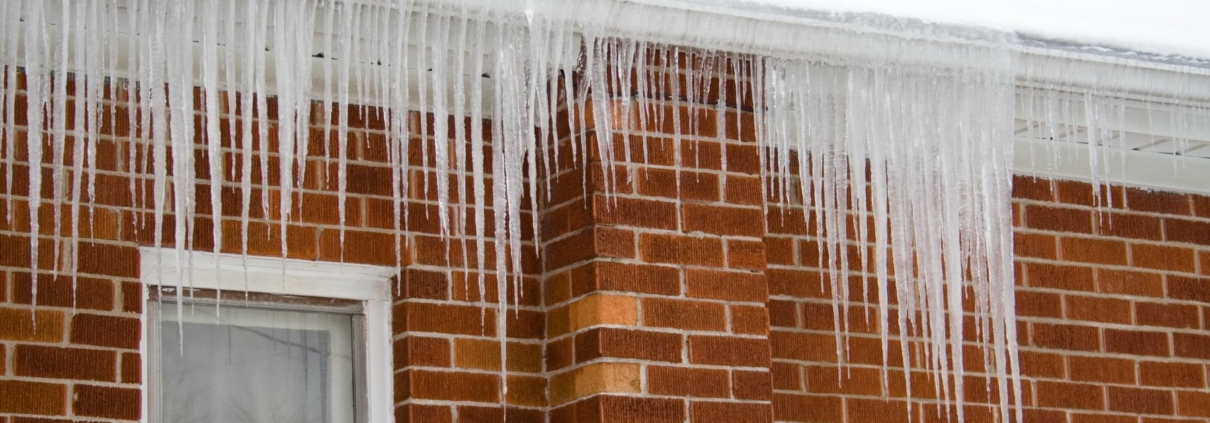The Icy Threat: Unmasking and Combating Ice Dams on Your Roof
As a seasoned home inspector, my winter inspections take on a unique meaning. While the world admires the picturesque snow-laden roofs, my gaze is trained on the often-overlooked eaves, where a silent threat lurks: ice dams.
These seemingly harmless ridges of ice, resembling frozen teeth clamped onto the roof’s edge, are much more than a winter ornament. They are harbingers of potential disaster, capable of wreaking havoc on the very structure that protects your home and family.
The Icy Genesis: A Battle of Temperatures
The story of ice dams begins with a battle between opposing forces: warmth and cold. Heat from your cozy living space escapes into the attic, melting the snow on the upper part of the roof. This meltwater trickles down, but as it reaches the colder eaves, it encounters a frosty adversary – freezing temperatures. This creates a dam, blocking the natural flow of water and causing it to pool behind.
Think of this dam as a ticking time bomb. The trapped water, unable to escape, seeks the path of least resistance. It seeps under the shingles, infiltrating the roof deck and potentially leaking into the attic. This unwelcome guest wreaks havoc, causing a cascade of consequences:
- Rotting wood: The constant moisture weakens the wooden structures of your roof, compromising its integrity and posing a safety hazard.
- Water damage: Leaks stain ceilings, warp walls, and nurture mold growth, creating costly repair bills and potential health risks.
- Exacerbated ice damming: The trapped water refreezes, further expanding the ice dam and perpetuating the cycle of destruction.
Unmasking the Villains: What Fuels the Icy Menace?
But who are the accomplices in this icy crime? Several factors contribute to ice dam formation, acting as unwitting allies to the frozen villain:
- Inadequate attic ventilation: Poor air circulation traps heat in the attic, melting more snow and feeding the dam.
- Poor insulation: Gaps in insulation allow heat to escape more easily, increasing the melting effect and fueling the icy threat.
- Clogged gutters: Blocked gutters prevent water from draining freely, contributing to the pool behind the dam and amplifying its destructive potential.
The Hero’s Journey: Battling Back and Preventing Future Onslaughts
The good news is, you don’t have to surrender to the icy menace. With a proactive approach, you can become the hero of your home’s story, preventing ice dams and safeguarding its structural integrity. Here’s your arsenal:
- Prevention is key:
- Improve attic ventilation: Install soffit vents and a ridge vent to promote air circulation and keep the roof consistently cool.
- Upgrade insulation: Seal air leaks and add more insulation in the attic to prevent heat from escaping and melting snow.
- Maintain clear gutters: Regularly clear your gutters to ensure smooth drainage and prevent water from backing up and forming dams.
- For immediate relief:
- Ice removal: If dams have formed, remove them carefully using specialized tools or by hiring professionals. Avoid harsh methods that could damage your roof.
- Heat cables: Consider installing heat cables along the eaves to prevent ice buildup in the future.
Bonus Tip: As a home inspector, I always recommend homeowners check their roofs regularly, especially after heavy snowfall or during periods of fluctuating temperatures. Early detection and prompt action can prevent significant damage and save you money in the long run.
Remember, ice dams are not inevitable winter woes. By understanding their cause, recognizing the hazards, and taking preventive measures, you can transform your roof from a potential battleground into a fortress of winter resilience.
So, this winter, let your snow-covered roof tell a story of proactive protection, not icy peril. Be the hero of your home and take control of the narrative.




Leave a Reply
Want to join the discussion?Feel free to contribute!